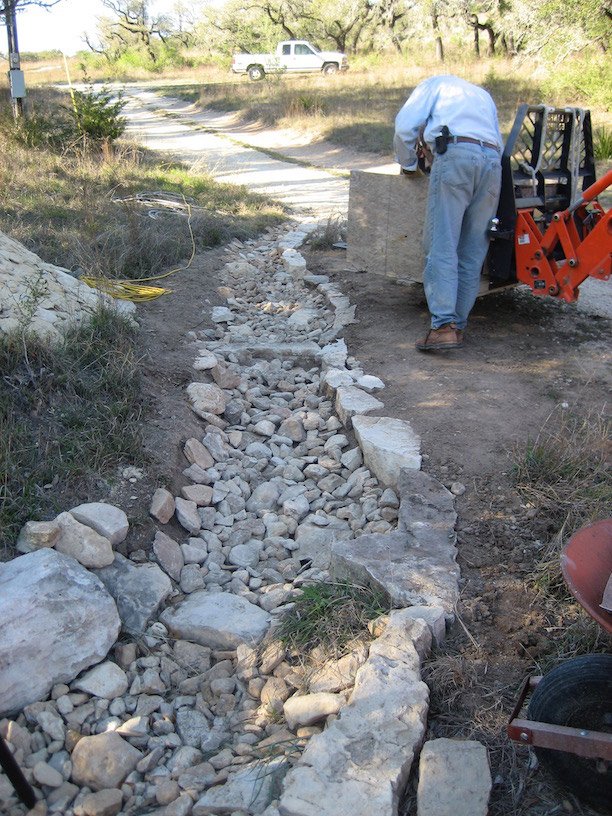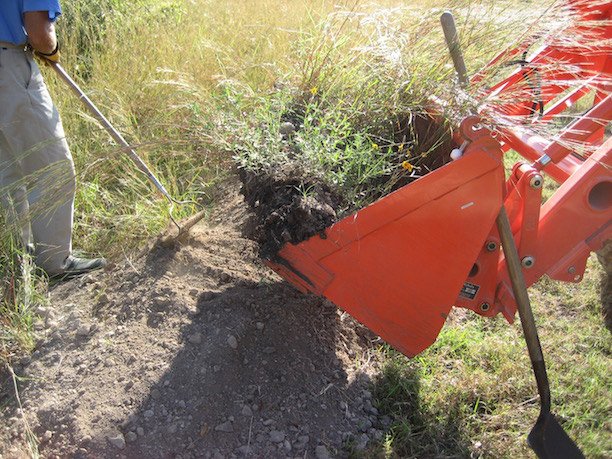Flood Control Case Study
On one property, the problem was that runoff quickly filled the small drainage ditch along the driveway and rushed down to the creek. The owners created diverters along the driveway to catch the runoff and divert it on the native grasses bordering the driveway.
Drainage diverter from the driveway (left) into native grasses (right) slows down the runoff as it flows downhill, and lets it soak into the soil.
Here is another drainage diverter that captures the runoff below the previous one. This one is linked to a decorative “dry stream bed.”
The diverters dramatically reduced the runoff from along the driveway, but the runoff from the adjoining land still rushed down a natural draw into the creek. The owners added a large berm and smaller low stone wall that spanned that draw.
The large soil berm spans a 40 ft wide draw. It’s about 2ft high in the center tapering to zero at the edges. The owners used soil and native grasses from a future construction site. The grasses were dug using the tractor’s front loader.
Left half of the berm after the soil core was in place.
Plants were laid directly from the front loader onto the soil core, and then more soil was added with shovels to fill the gaps that formed between the native bunch grasses and forbs. Today it is barely visible.
This very leaky low stone wall captures any runoff that gets past the drainage diverters and the large berm. It is designed to trap debris such as leaves, and it filters and slowly releases the water. This is the last defense before the remaining runoff enters the creek.





